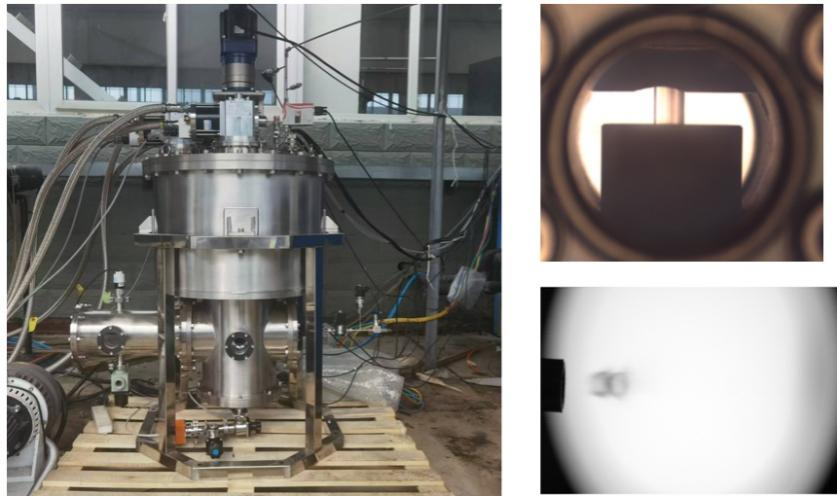Continuous Cryogenic Pellet Injection System Developed for Tokamak Fueling
 A continuous cryogenic pellet injection system for tokamak fueling has been developed by a joint research team from the Hefei Institutes of Physical Science of the Chinese Academy of Sciences. It overcame technical challenges related to cryogenic ice formation, pellet cutting and pellet launching. Cryogenic pellet injection is a cutting-edge technique in fusion research, where hydrogen isotopic gases are condensed into solid ice pellets, which are then accelerated and injected into plasma. This method offers deep particle injection and high fueling efficiency, making it a crucial technology for the future of fusion reactors. It is considered a key core fueling technology for next-generation fusion devices such as the International Thermonuclear Experimental Reactor (ITER), the China Fusion Engineering Test Reactor (CFETR) and the European Demonstration Fusion Reactor (EU-DEMO).
A continuous cryogenic pellet injection system for tokamak fueling has been developed by a joint research team from the Hefei Institutes of Physical Science of the Chinese Academy of Sciences. It overcame technical challenges related to cryogenic ice formation, pellet cutting and pellet launching. Cryogenic pellet injection is a cutting-edge technique in fusion research, where hydrogen isotopic gases are condensed into solid ice pellets, which are then accelerated and injected into plasma. This method offers deep particle injection and high fueling efficiency, making it a crucial technology for the future of fusion reactors. It is considered a key core fueling technology for next-generation fusion devices such as the International Thermonuclear Experimental Reactor (ITER), the China Fusion Engineering Test Reactor (CFETR) and the European Demonstration Fusion Reactor (EU-DEMO).
Cryogenic technologies are fundamental to the success of pellet injection systems, as they ensure the precise formation and handling of solid hydrogen isotopes under extreme conditions. The process of forming cryogenic ice requires temperatures below 20 K, where hydrogen isotopes transition from gas to solid. Maintaining such low temperatures is technically demanding, as even minor temperature fluctuations can lead to irregularities in pellet shape or density, reducing injection efficiency. Advanced cryogenic systems are also crucial for the seamless cutting and transfer of these fragile pellets to the launcher without fracturing. Furthermore, the ability to rapidly freeze and process isotopic gases into pellets ensures consistency during high-frequency injection, which is essential for sustaining plasma fueling in tokamaks. These developments highlight the interdisciplinary nature of cryogenics, which not only supports fueling efficiency but also enables more stable plasma confinement critical for achieving fusion ignition.
The newly developed system can launch pellets of up to 12 mm³ in volume per shot, with an adjustable firing frequency between 1 and 10 Hz. It can also achieve a maximum pellet velocity of over 300 m/s, matching the performance of international counterparts. The system passed its factory acceptance test on the first attempt. This system is set to be installed on the EAST Tokamak, where it will support high-density and high-confinement plasma experiments, according to the team.
Caption: Photographs and Test Results of the Pellet Injection Fueling System Credit: HOU Jilei


